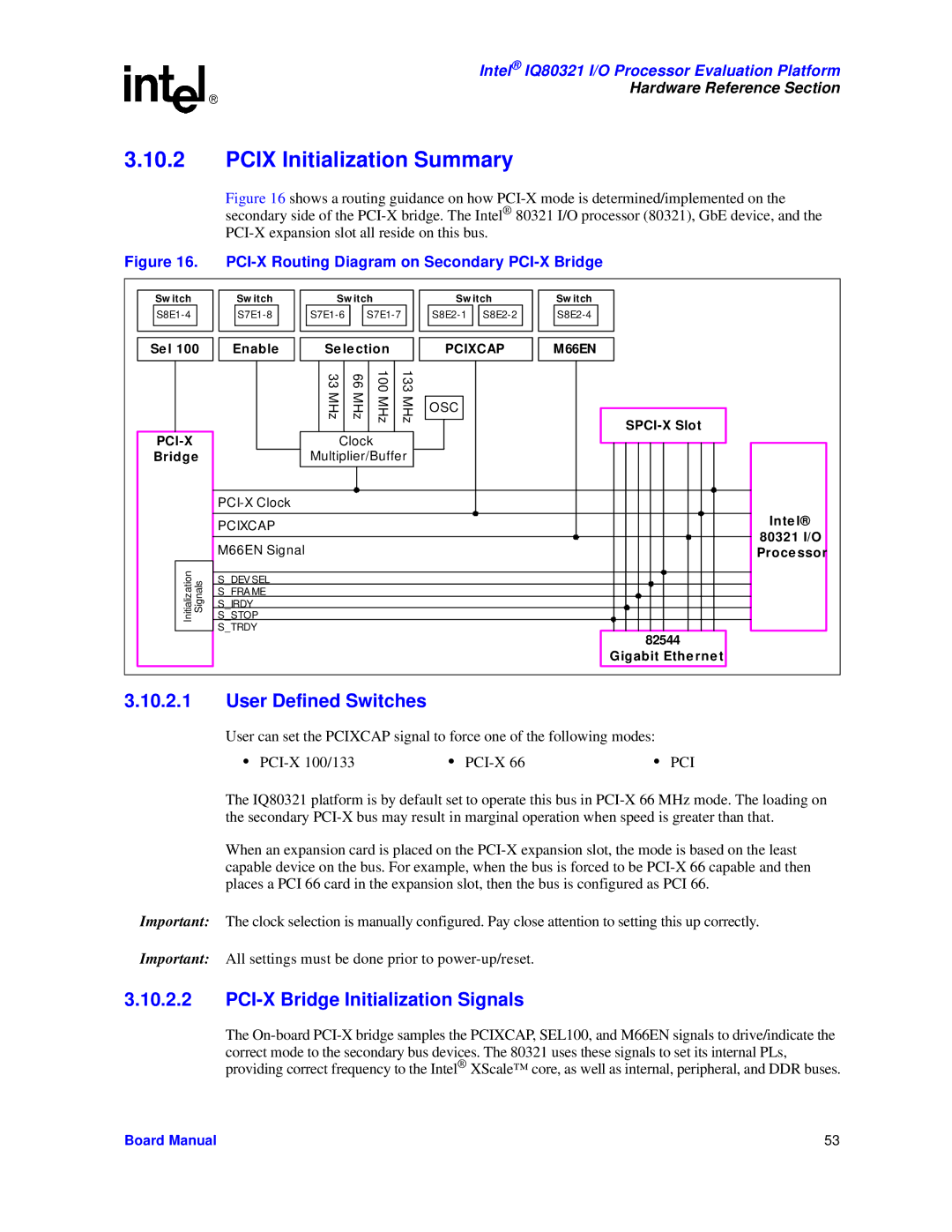
Intel® IQ80321 I/O Processor Evaluation Platform
Hardware Reference Section
3.10.2PCIX Initialization Summary
Figure 16 shows a routing guidance on how PCI-X mode is determined/implemented on the secondary side of the PCI-X bridge. The Intel® 80321 I/O processor (80321), GbE device, and the PCI-X expansion slot all reside on this bus.
Figure 16. PCI-X Routing Diagram on Secondary PCI-X Bridge
Sw itch |
| Sw itch | Sw itch |
| Sw itch | Sw itch | ||
|
| |||||||
Se l 100 | Enable | Se le ction |
| PCIXCAP | M66EN | |||
|
|
| 33 | 66 | 100 | 133 |
|
|
|
|
| MHz | MHz | MHz | MHz | OSC |
|
|
|
|
| |||||
|
|
|
|
|
|
|
| |
|
|
|
| Clock |
|
|
| |
Bridge |
| Multiplier/Buffer |
|
| ||||
|
|
|
|
|
|
|
| |
|
| PCIXCAP |
|
|
|
|
| Inte l® |
|
|
|
|
|
|
| 80321 I/O | |
|
| M66EN Signal |
|
|
|
|
| |
|
|
|
|
|
|
| Proce ssor | |
Initialization | Signals | S_DEV SEL |
|
|
|
|
|
|
S_FRA ME |
|
|
|
|
|
| ||
S_IRDY |
|
|
|
|
|
| ||
S_STOP |
|
|
|
|
|
| ||
S_TRDY |
|
|
|
|
|
| ||
|
|
|
|
|
|
| 82544 | |
|
|
|
|
|
|
|
| |
|
|
|
|
|
|
|
| Gigabit Ethe rne t |
3.10.2.1User Defined Switches
User can set the PCIXCAP signal to force one of the following modes:
• | • | • PCI |
The IQ80321 platform is by default set to operate this bus in
When an expansion card is placed on the
Important: The clock selection is manually configured. Pay close attention to setting this up correctly.
Important: All settings must be done prior to
3.10.2.2PCI-X Bridge Initialization Signals
The
Board Manual | 53 |
